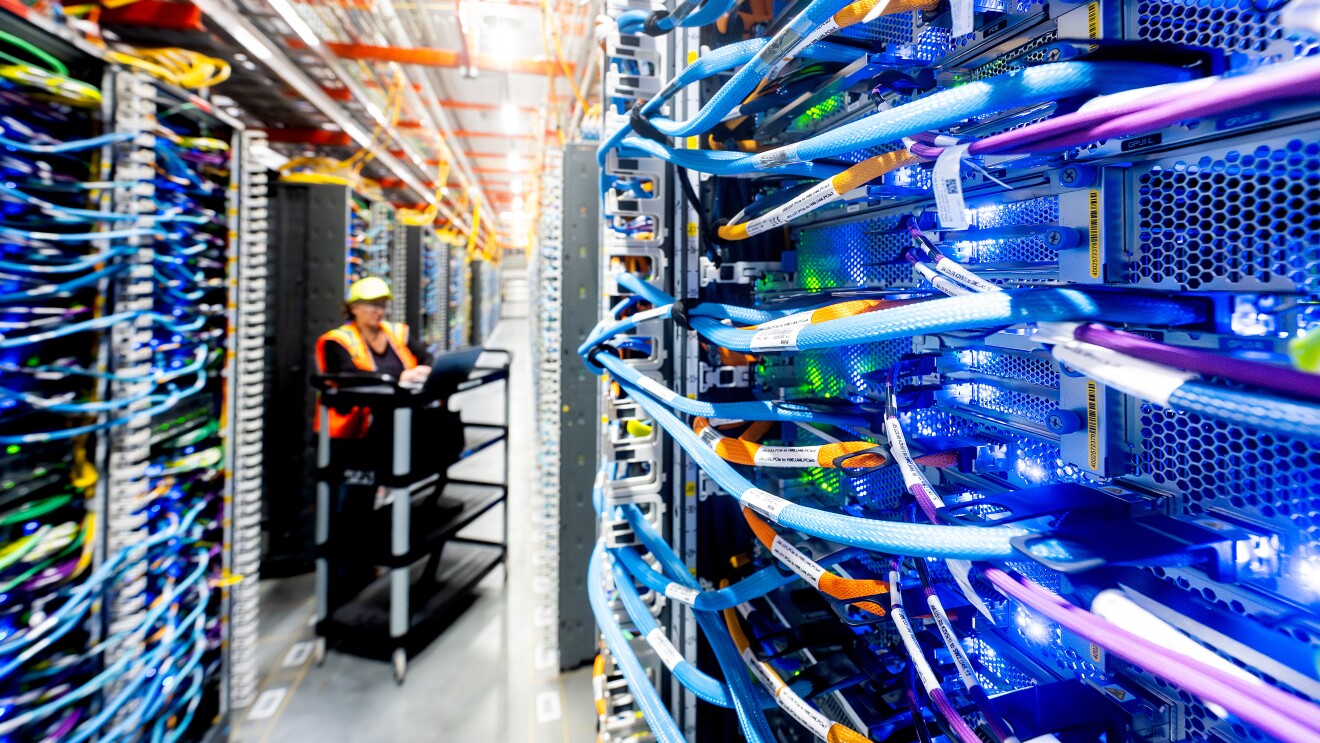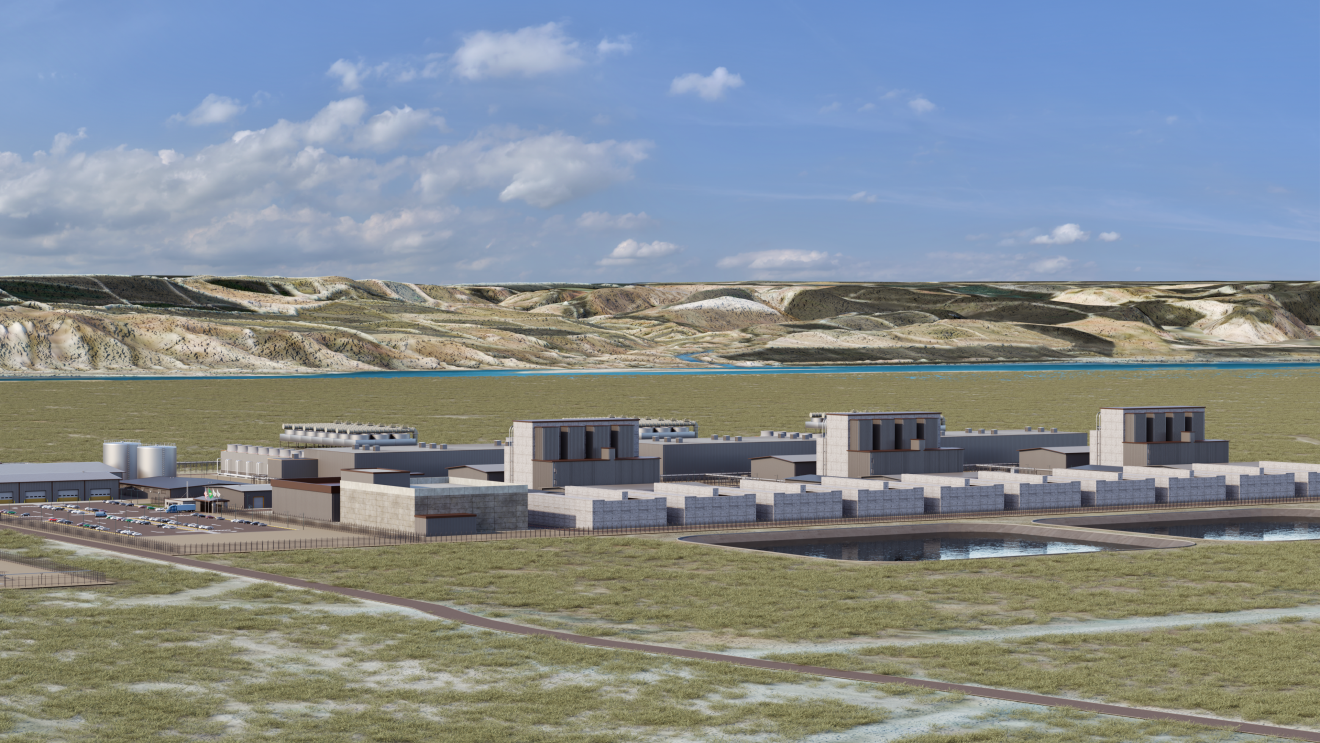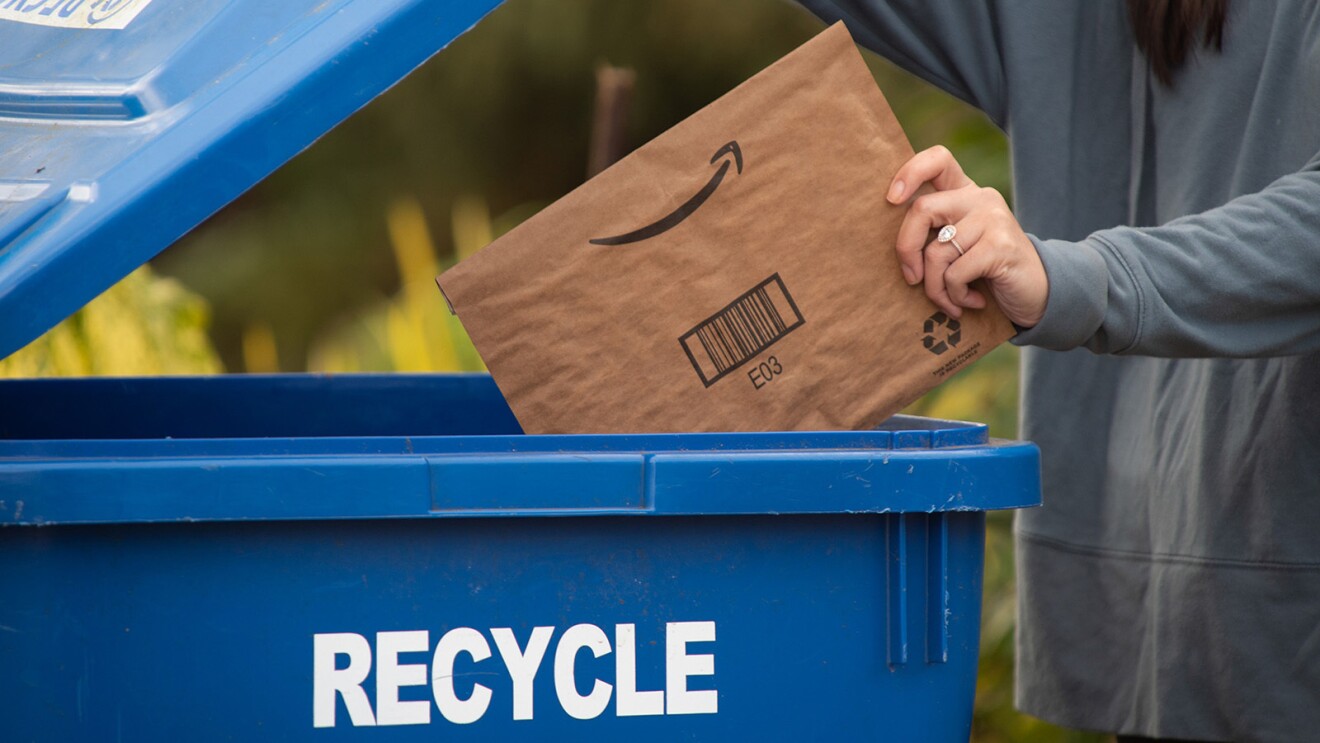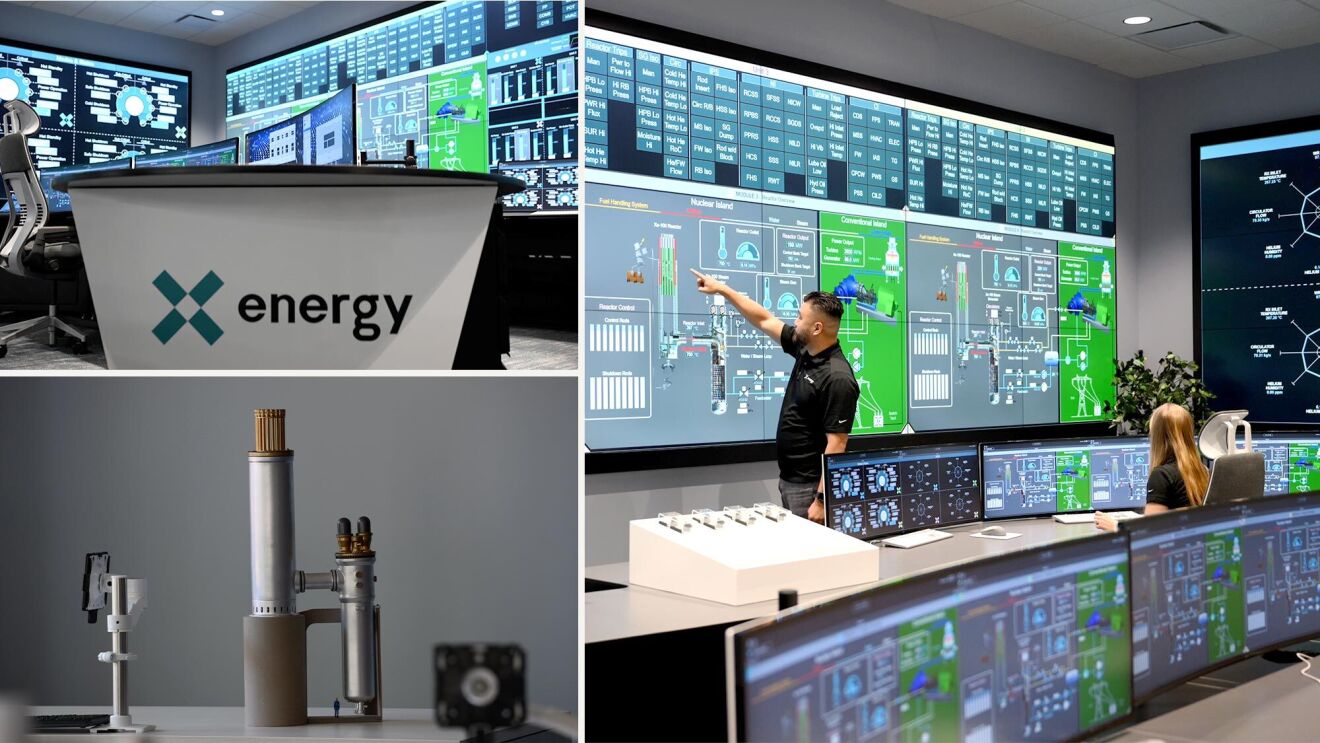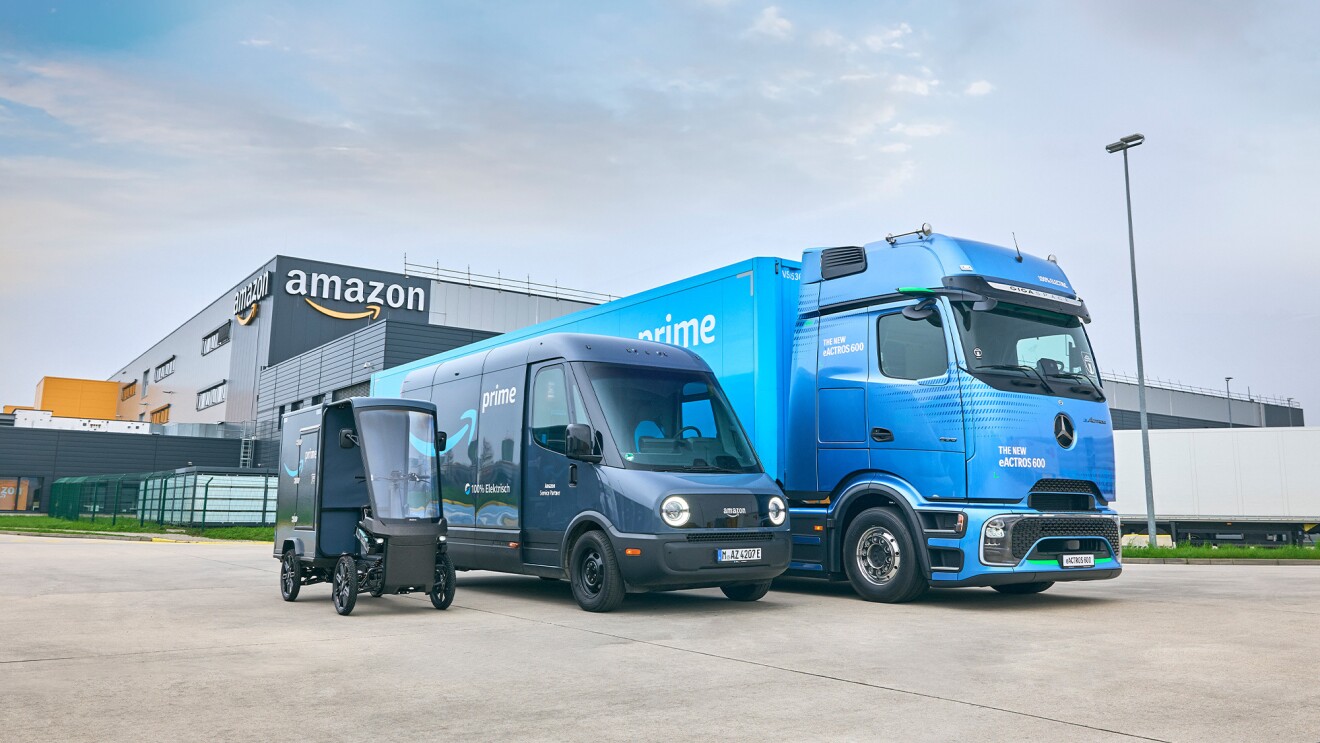Page overview
A wind farm in California can supply clean energy for data centers in eastern Oregon.
Being 100% renewable doesn’t mean you’re plugged directly into a wind or solar farm. The reality is that it takes a mix of technologies to reach 100% renewable energy. Solar panels on buildings can help capture the power of the sun, while so-called “off-site” projects, such as wind and solar farms, take advantage of windier and sunnier locations spread over wide areas and so they can generate much larger amounts of clean energy. Connecting these projects to the grid, which can span multiple states, makes it possible for a wind farm in California to supply clean energy for our data centers in eastern Oregon. The grid will need continued build out to connect all the renewable energy projects set to come online in the U.S. (more on this later). A robust power grid is essential to enabling large-scale energy users like Amazon to optimize how we locate and scale renewable energy.
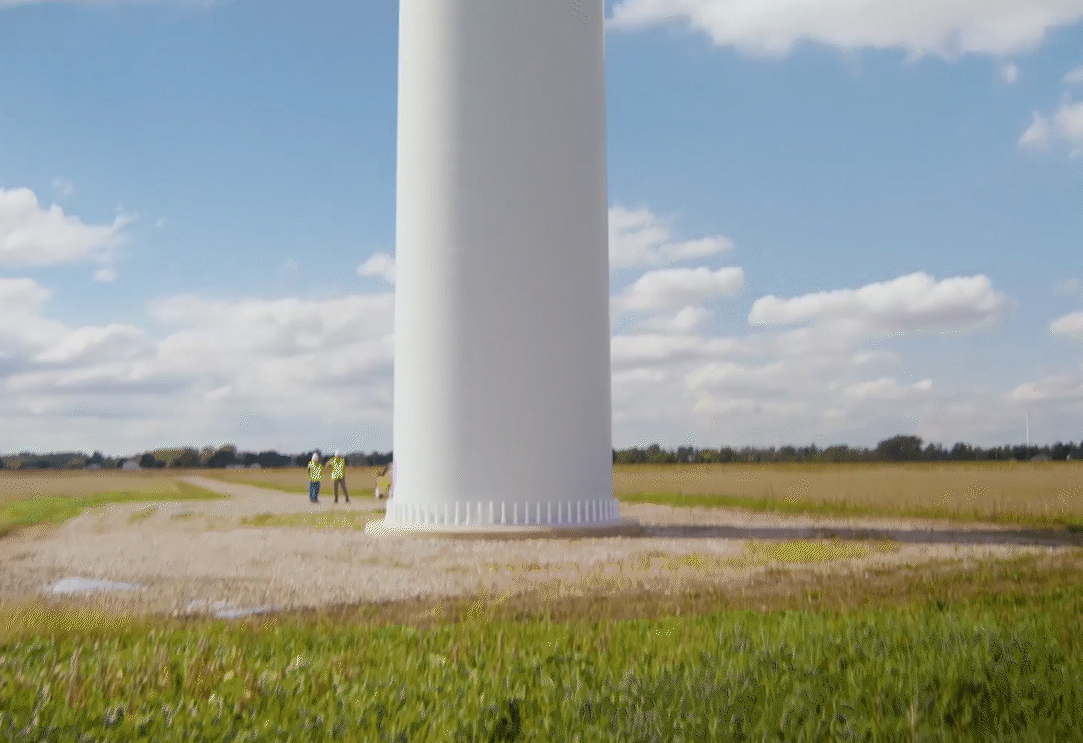
Renewable energy is about more than solar farms that can be built on top of fisheries or awe-inspiring rows of wind turbines along a horizon. It’s also about dollars and cents, such as tariffs and contracts—in other words, who can buy what, from whom, for how much, and who pays for it? Aside from the physical infrastructure that transports energy from the wind farm where it’s generated to the grid, we must navigate a system of regulations, state and federal laws, and rates. These laws and regulations can vary from state to state, and some areas may not have a system in place to accommodate renewables at scale.
Take Virginia, where AWS, and the entire data center industry, has its largest presence in the world. We worked with regulators and utilities to create a new tariff structure for corporate companies to be able to buy clean energy directly from renewable energy projects, where such structures previously didn’t exist. Once a tariff like that is set up, it’s open to other large customers, unlocking opportunities for other companies to follow suit. In eastern Oregon, we recently partnered with Umatilla Electric Cooperative—the utility serving our data centers in the area—to create a first-of-its-kind deal structure in the state that allows us to take on the responsibility of selecting the energy supply that powers our data centers, including from renewable energy sources. By creating a new structure where we can select our own power supply, and buy more renewable energy than we might have received under the previous arrangement, we’re showing other companies and organizations that staying on path to meeting sustainability commitments is possible everywhere.
In the past, utility companies built wind and solar farms with public funding. The way Amazon enables most of the large-scale renewable projects we’ve announced around the world is through a contract called a power purchase agreement (PPA). In a PPA, we make a commitment to buy the electricity a renewable energy project will produce over a long period of time, usually more than 10 years. This allows the developer to raise funds, purchase equipment, and ultimately construct the project, bringing more renewable energy to electricity grids around the world without direct costs to local energy users.
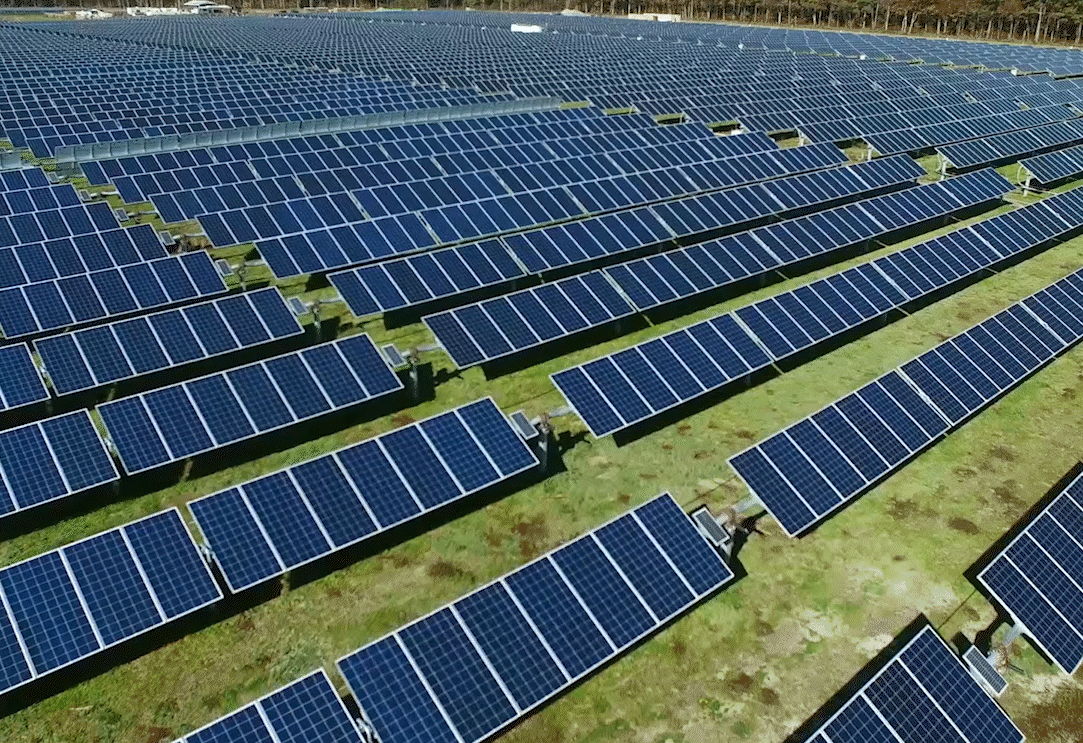
Amazon’s commitment to buying the energy is what enables these new wind and solar projects to be built.
Developing a new renewable project requires us to think precisely about the specific challenges of that particular location, as well as the existing mix of energy generation in that part of the grid. In California, for example, the grid has more solar energy in the middle of the day, but it lacks solar energy in the evening when many people are turning on their lights and air conditioning. This big jump in demand means that a grid mostly powered by solar energy during the day will switch to energy from natural gas plants later in the day. One way we’re helping to tackle this is by pairing large-scale battery storage with our solar projects. This allows our projects to store renewable energy generated during times of potential oversupply and use it later in the day when the grid needs it most—enabling the use of carbon-free electricity more often during the day.
In the U.S., the demand for renewable energy has grown significantly and that’s critical to meeting the carbon reduction goals set by the Biden administration and companies like Amazon. But right now, the U.S. has more clean energy projects in the pipeline than the grid can handle. More investment needs to be made in the transmission and distribution system—all the physical infrastructure that actually moves electricity from the wind farm or solar plant where it’s generated to where it can be used—to support these projects as they start to come online. As we look to the future, with more companies like Amazon investing in renewable energy at the same scale and level of utilities, we are committed to contributing ideas in this conversation. In the U.S., some states are moving forward with proposed new bills that mandate 100% clean energy use for some energy users. All of this well-intentioned effort depends on grids being able to support new renewable projects. That’s why Amazon is helping to create the right policies and incentives that will enable and encourage the much needed build-out of the transmission system.
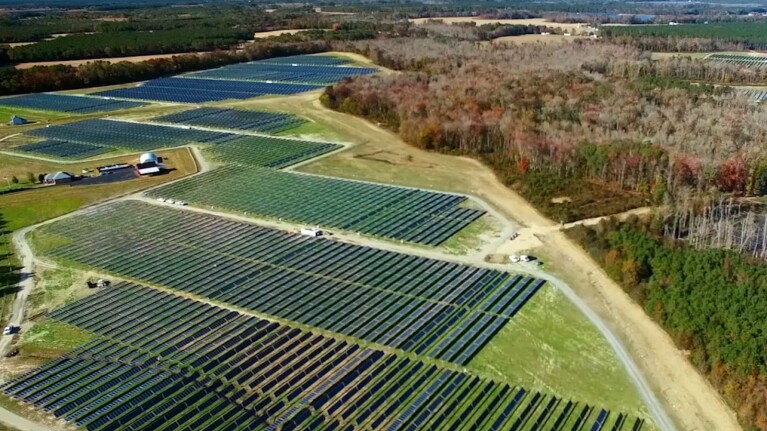
Trending news and stories



